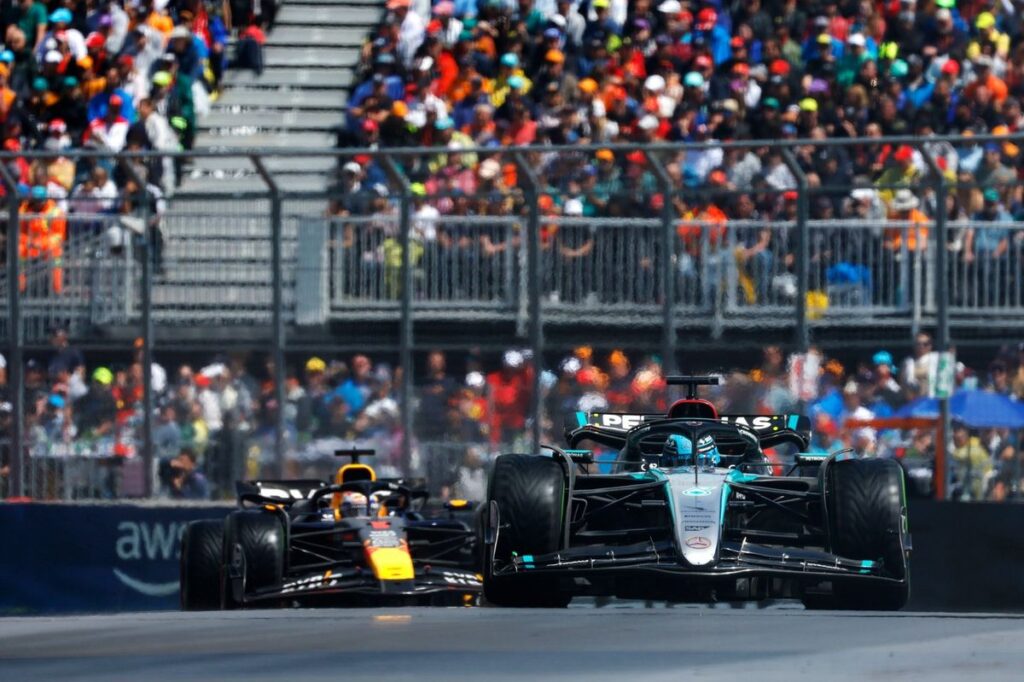Formula 1 News: FIA Unlikely to Intervene in Flexi-Wing Controversy Despite Teams Pushing Boundaries
As the debate surrounding Formula 1’s flexi-wing intrigue continues to simmer, the FIA has indicated that it sees no need to intervene, despite teams openly admitting that they need to push the boundaries to remain competitive, Autosport has learned.
Flexible Front Wing Design Raises Concerns
A recent shift in front wing design direction from Mercedes, which has seen its front wing adopt a greater degree of flexibility to deliver balance gains, has re-opened the debate about what teams can and cannot do within the Formula 1 regulations. This has prompted speculation that some teams could be ready to lodge formal complaints about the antics of a number of squads who appear to be exploiting flexible front wings that comply with the rules – including McLaren and Red Bull.
FIA Comfortable with Current Designs
However, despite wings being seen to flex noticeably from onboard camera footage, it is understood that the FIA is comfortable with the designs that teams have employed and is not planning to probe matters for now. This means that the current front wing flexibility tests, where loads are applied to the wings in the pits to ensure they do not bend too much, will stay at their current levels.
Teams Embrace Flexi-Wing Benefits
The FIA’s acceptance that what teams are doing is okay comes against the backdrop of a growing reality from competitors that they have to engineer a degree of flexibility to help better manage aero balance with the ground effect cars. Ferrari’s performance engineer Jock Clear emphasized that using the benefits of flexi-wings is as essential a design aspect as other key areas of the car.
“There’s no question that you need to do it to be quick, if you see what I mean,” Clear said. “Whatever’s available to you within the rules is what we explore. So that doesn’t look any different for a front wing or a rear wing or a floor or anything. It’s just a development.”
Pushing the Boundaries within Regulations
While much of the focus in recent days has revolved around what Mercedes has done, team boss Toto Wolff says everyone is now pushing things to the limit in the bid to move up the grid. “Front wings play a big role today, it’s clear,” he said. “Aero elasticity plays a big role, but so do the floors. I think it’s always the combination of these. You can have a front wing that flexes like a banana and passes the test, but the rest of the car just doesn’t work properly in the interaction. I think everybody’s trying to push the boundaries and within the regulations.”
Red Bull’s Perspective
There had been suggestions that Red Bull had contacted the FIA about the flexi-wing behavior of Mercedes, but this has been dismissed by its motorsport advisor Helmut Marko. Speaking to Autosport, Marko said: “We didn’t complain, but we just noticed it. If the car is so much faster on the straights then you can see where it comes from. But it went through the scrutineering, so it was okay.”
Marko thinks it is a normal part of the conversation in Formula 1, where teams often accuse each other of exploiting flexi-wing tactics. “It has always been a problem and nearly every team is affected by it at some stage,” he explained. “One time some teams will accuse others, and then the ones that are behind are blaming the others and say that they don’t have it. This is a normal game for as long as I have been in Formula 1, it has always been like this.”
As the Formula 1 season continues, it remains to be seen whether the FIA will revisit its stance on flexi-wings or if teams will continue to push the boundaries of what is allowed within the regulations. One thing is certain, however – the quest for competitive advantage will drive innovation and creativity in Formula 1, and the flexi-wing controversy is just the latest chapter in this ongoing saga.
🔗 Source
